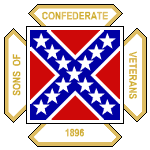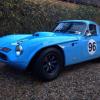I think the answer is develoment. In 5l racing the Ford at that time was no match for the Chev. Unless you had the very few special blocks, cranks etc you would bever be in the race power wise and unless you used Clevo heads [Boss engine] you would never have the power. And the Boss had all top end power and less driveability. Strength wise modern Windsor blocks are so much stronger and the heads advailable make very good power these days.Though even now the size of the block is a limiting factor unless you use a tall deck block.
As for the big block the development was mostly in the 427 FE engine which is a very big lump of iron. They got very good power and eventually reliability from them but they are just too big and heavy for a Can Am car. The 429 was new in 71 and had no development though is a decent and reasonable weight engine, in some respects a big Windsor.But an alloy Chev with near 10 years of development would be hard to beat. The 429 and later 460 though really was built as a modern smooth passenger car engine though Boss 429s are strong thing for the day.
Did they ever use the 429 in Nascar? I know they used the Cleveland up til the early 80s which would have been a real adventure in reliability as the oiling is very average as is the coolant flow and compared with a Chev are very heavy and a big handgrenade, though on their day powerfull. I know I race one!! Though in a fairly reliable state of tune. These days the performance parts are reasonably hard to get unlike the Windsor which has near the amount of gear advailable as a Chev. Probably more good stuff advailable here in Oz as in the US for the Cleveland.
The FE was lighter than the 385 series, and neither had a weight disadvantage to the Chevy if cast from similar metal.
The Boss 385s had an oiling difference from the wedge blocks that made interchangebility difficult, but not impossible.
The short deck Boss Windsor blocks were as strong or stronger than the Chevys and a good deal lighter. They were really first produced for the Tunnel-port 302s. There was no difference between the street and race blocks.
Until fairly recently, they were the only four-bolt main Windsors produced by Ford, in iron, and the only ones ever put into a production car.
Ford never put any emphasis on a performance 385, outside of the Boss, until the past several years; Jon Kasse has been the driving force behind many Ford performance products of late.
Edited by Bob Riebe, 14 September 2010 - 18:45.























